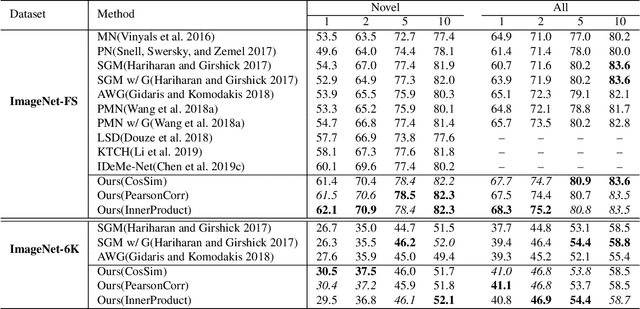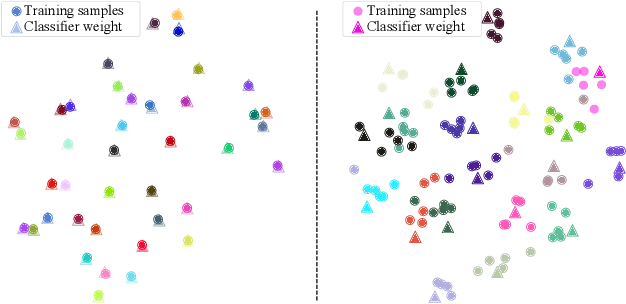Xiaolu Hui
Knowledge-Guided Multi-Label Few-Shot Learning for General Image Recognition
Sep 20, 2020



Abstract:Recognizing multiple labels of an image is a practical yet challenging task, and remarkable progress has been achieved by searching for semantic regions and exploiting label dependencies. However, current works utilize RNN/LSTM to implicitly capture sequential region/label dependencies, which cannot fully explore mutual interactions among the semantic regions/labels and do not explicitly integrate label co-occurrences. In addition, these works require large amounts of training samples for each category, and they are unable to generalize to novel categories with limited samples. To address these issues, we propose a knowledge-guided graph routing (KGGR) framework, which unifies prior knowledge of statistical label correlations with deep neural networks. The framework exploits prior knowledge to guide adaptive information propagation among different categories to facilitate multi-label analysis and reduce the dependency of training samples. Specifically, it first builds a structured knowledge graph to correlate different labels based on statistical label co-occurrence. Then, it introduces the label semantics to guide learning semantic-specific features to initialize the graph, and it exploits a graph propagation network to explore graph node interactions, enabling learning contextualized image feature representations. Moreover, we initialize each graph node with the classifier weights for the corresponding label and apply another propagation network to transfer node messages through the graph. In this way, it can facilitate exploiting the information of correlated labels to help train better classifiers. We conduct extensive experiments on the traditional multi-label image recognition (MLR) and multi-label few-shot learning (ML-FSL) tasks and show that our KGGR framework outperforms the current state-of-the-art methods by sizable margins on the public benchmarks.
Knowledge Graph Transfer Network for Few-Shot Recognition
Nov 21, 2019



Abstract:Few-shot learning aims to learn novel categories from very few samples given some base categories with sufficient training samples. The main challenge of this task is the novel categories are prone to dominated by color, texture, shape of the object or background context (namely specificity), which are distinct for the given few training samples but not common for the corresponding categories (see Figure 1). Fortunately, we find that transferring information of the correlated based categories can help learn the novel concepts and thus avoid the novel concept being dominated by the specificity. Besides, incorporating semantic correlations among different categories can effectively regularize this information transfer. In this work, we represent the semantic correlations in the form of structured knowledge graph and integrate this graph into deep neural networks to promote few-shot learning by a novel Knowledge Graph Transfer Network (KGTN). Specifically, by initializing each node with the classifier weight of the corresponding category, a propagation mechanism is learned to adaptively propagate node message through the graph to explore node interaction and transfer classifier information of the base categories to those of the novel ones. Extensive experiments on the ImageNet dataset show significant performance improvement compared with current leading competitors. Furthermore, we construct an ImageNet-6K dataset that covers larger scale categories, i.e, 6,000 categories, and experiments on this dataset further demonstrate the effectiveness of our proposed model.
Learning Semantic-Specific Graph Representation for Multi-Label Image Recognition
Aug 20, 2019



Abstract:Recognizing multiple labels of images is a practical and challenging task, and significant progress has been made by searching semantic-aware regions and modeling label dependency. However, current methods cannot locate the semantic regions accurately due to the lack of part-level supervision or semantic guidance. Moreover, they cannot fully explore the mutual interactions among the semantic regions and do not explicitly model the label co-occurrence. To address these issues, we propose a Semantic-Specific Graph Representation Learning (SSGRL) framework that consists of two crucial modules: 1) a semantic decoupling module that incorporates category semantics to guide learning semantic-specific representations and 2) a semantic interaction module that correlates these representations with a graph built on the statistical label co-occurrence and explores their interactions via a graph propagation mechanism. Extensive experiments on public benchmarks show that our SSGRL framework outperforms current state-of-the-art methods by a sizable margin, e.g. with an mAP improvement of 2.5%, 2.6%, 6.7%, and 3.1% on the PASCAL VOC 2007 & 2012, Microsoft-COCO and Visual Genome benchmarks, respectively. Our codes and models are available at https://github.com/HCPLab-SYSU/SSGRL.
 Add to Chrome
Add to Chrome Add to Firefox
Add to Firefox Add to Edge
Add to Edge